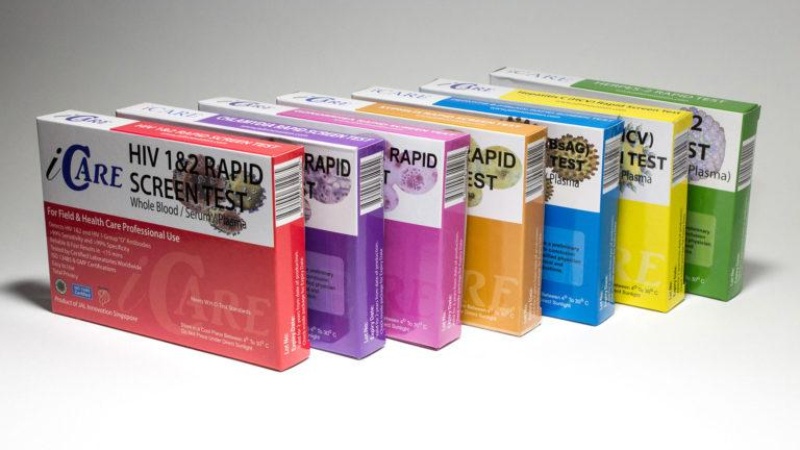
Sexually transmitted diseases (STDs) remain a significant public health concern worldwide. Despite advancements in medical care and increased awareness, many individuals still face barriers to regular STD testing. The advent of at-home STD testing kits has revolutionized the approach to sexual health management, offering a private and convenient alternative to traditional clinic visits. This article explores seven compelling reasons why individuals might consider opting for at-home STD testing.
1. Enhanced Privacy and Confidentiality
One of the primary advantages of at-home STD testing is the high levels of privacy it affords. Many individuals feel uncomfortable discussing their sexual health with healthcare providers or fear being seen at a clinic specializing in STD testing. An at home std test will eliminate these concerns by allowing individuals to collect samples in the privacy of their own homes. This increased confidentiality can be particularly beneficial for those living in small communities where anonymity is challenging to maintain or for individuals who have concerns about the stigma associated with STD testing.
2. Convenience and Accessibility
The convenience factor of an at home std test kit cannot be overstated. Traditional testing often requires scheduling appointments, taking time off work, and traveling to a clinic. In contrast, at-home tests can be ordered online and delivered discreetly to one’s doorstep. This accessibility is especially valuable for individuals with limited mobility, those living in rural areas with fewer healthcare options, or people with busy schedules who find it challenging to visit a clinic during regular business hours.
3. Reduced Barriers to Regular Testing
Regular STD testing is crucial for maintaining sexual health and preventing the spread of infections. However, the inconvenience and discomfort associated with clinic visits can deter some individuals from getting tested as frequently as recommended. At-home testing lowers these barriers, potentially increasing the likelihood of adherence to regular testing schedules. This is particularly important for high-risk individuals or those with multiple sexual partners who require more frequent screening.
4. Comprehensive Testing Options
Many at-home STD testing kits offer comprehensive panels that screen for multiple infections simultaneously. These may include tests for common STDs such as chlamydia, gonorrhea, HIV, syphilis, and hepatitis C. Some kits even provide options for less common infections or allow users to customize their testing panel. This comprehensive approach ensures that individuals can receive a thorough evaluation of their sexual health status without the need for multiple clinic visits or separate tests.
5. Rapid Results and Self-Directed Follow-Up Care
At-home STD test kits typically provide results within minutes, often using a test cassette that allows individuals to read their results directly and immediately after completing the test. In the event of a positive result, users can take immediate action by scheduling appointments with healthcare providers of their choice for follow-up care. This self-directed approach empowers individuals to seek timely treatment or further evaluation based on their results, ensuring they receive appropriate care without delay. By enabling users to interpret their results on the spot and manage their own follow-up, at-home STD testing promotes proactive health management and maintains confidentiality.
6. Cost-Effectiveness
At-home STD testing kits are generally more affordable than clinic-based options, offering significant cost savings to individuals. The price of these kits is typically lower than the combined expenses of a traditional clinic visit, which often includes consultation fees, laboratory charges, and potential additional costs. At-home tests eliminate ancillary expenses associated with clinic visits, such as transportation costs and lost wages due to time off work. In fact, the lower prices of these tests make them accessible to a wider range of individuals. For those who require frequent testing, the cumulative savings can be substantial. The cost-effectiveness of at-home STD testing not only makes it an attractive option for routine health maintenance but also encourages more regular screening, potentially leading to earlier detection and treatment of STDs.
7. Empowerment and Health Literacy
At-home STD testing can contribute to increased health literacy and empowerment. The process of ordering a test, collecting samples, and interpreting results encourages individuals to take an active role in managing their sexual health. Many at-home testing kit retailers provide educational materials along with their kits, offering information about STDs, prevention strategies, and the importance of regular screening. This knowledge can lead to better-informed decisions about sexual health and promote open discussions with partners about STD status and prevention.
Considerations and Limitations
While at-home STD testing offers numerous benefits, it’s important to acknowledge its limitations. The accuracy of results can depend on proper sample collection, which may be challenging for some individuals. Additionally, at-home tests may not be suitable for all situations, such as cases requiring immediate treatment or those presenting with symptoms that warrant a physical examination. It’s crucial for healthcare providers to be aware of the growing popularity of at-home STD testing and to be prepared to discuss this option with patients.
Conclusion
At-home STD testing represents a significant advancement in sexual health management, offering a private, convenient, and accessible option for many individuals. The seven reasons discussed – enhanced privacy, convenience, reduced barriers to regular testing, comprehensive options, rapid results with follow-up care, cost-effectiveness, and increased health empowerment – make at-home testing an attractive alternative to traditional clinic-based screening for many people. As technology continues to evolve and at-home testing methods improve, this approach is likely to play an increasingly important role in STD prevention and management strategies. However, it’s essential to view at-home testing as a complement to, rather than a replacement for, traditional healthcare services. By integrating at-home testing into broader sexual health programs and education efforts, healthcare providers and public health officials can leverage this tool to improve STD screening rates and overall sexual health outcomes in the population.